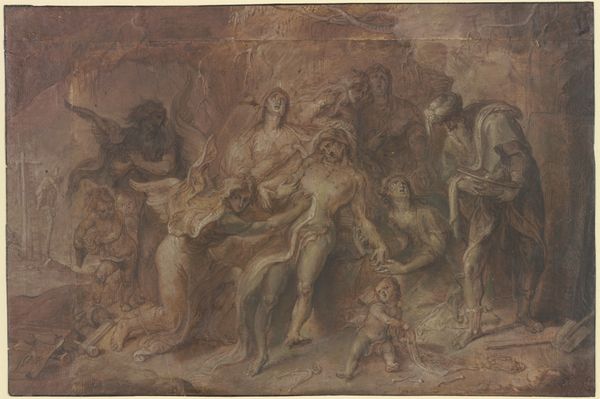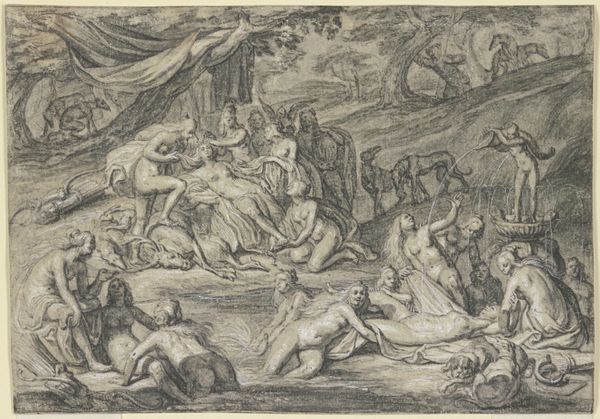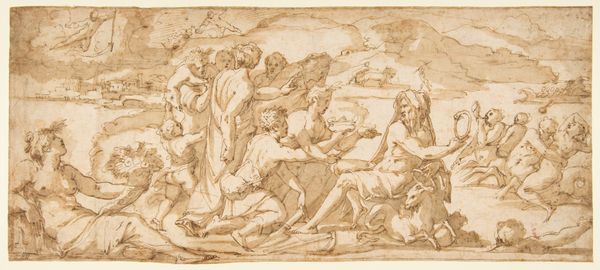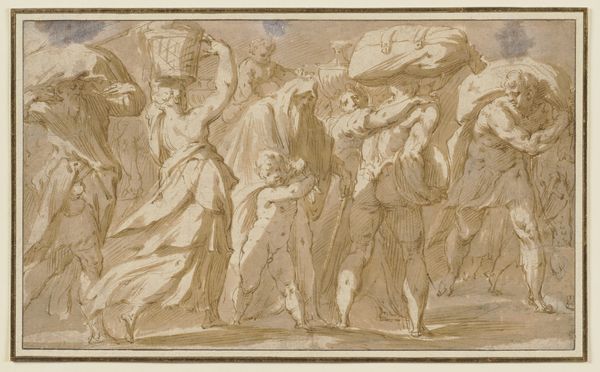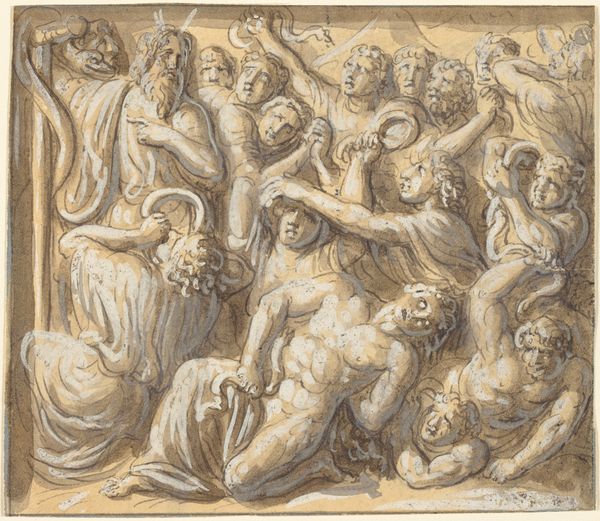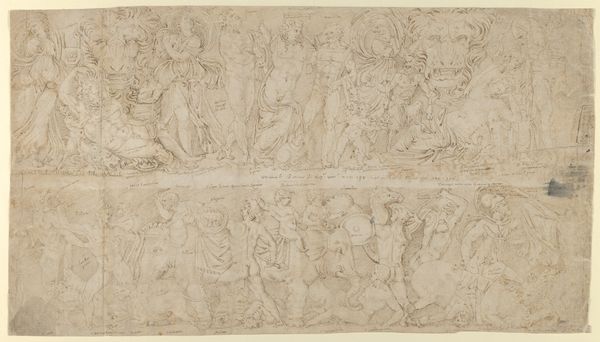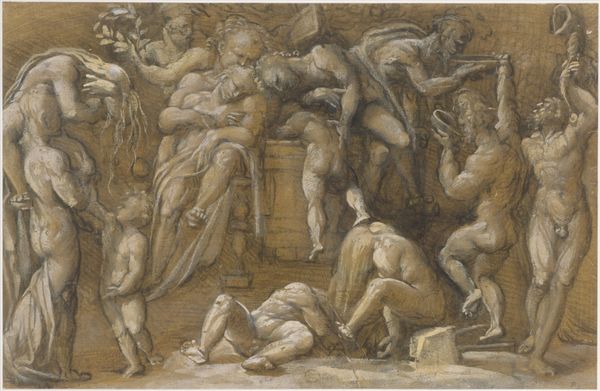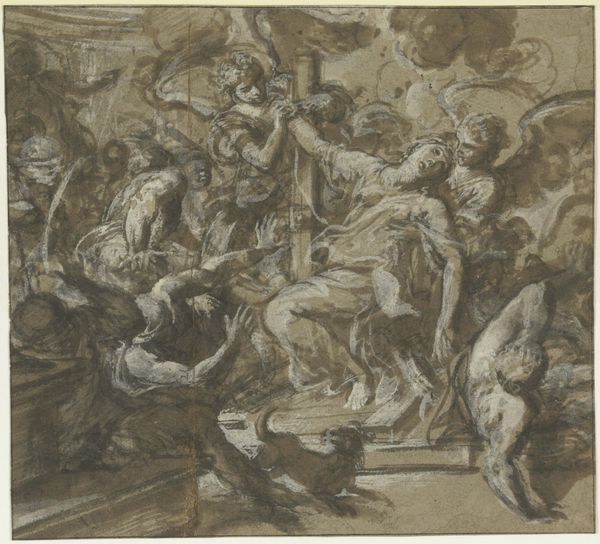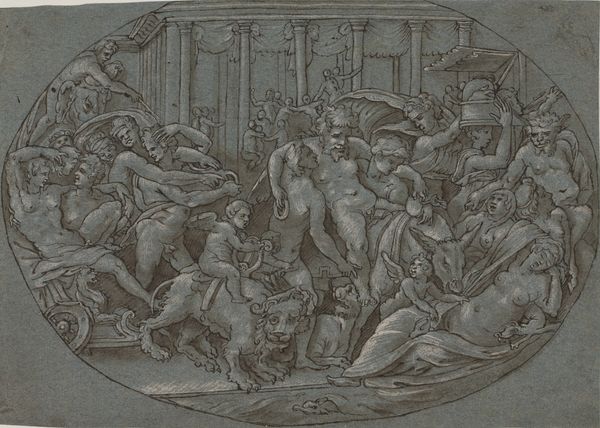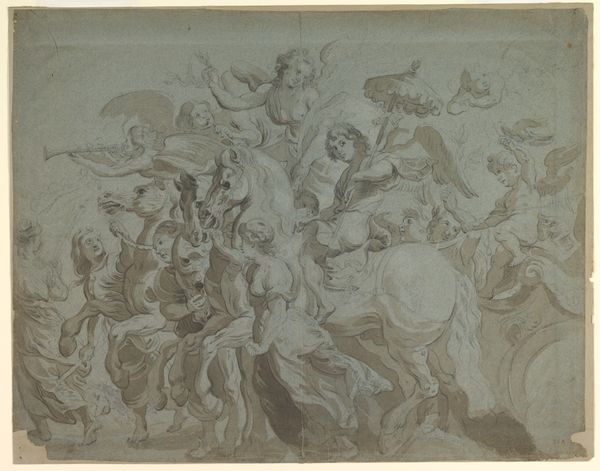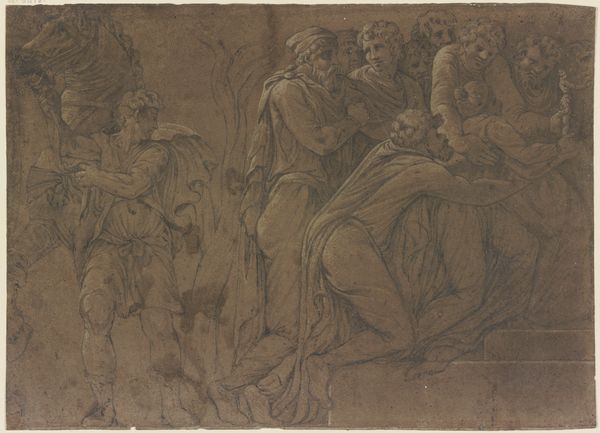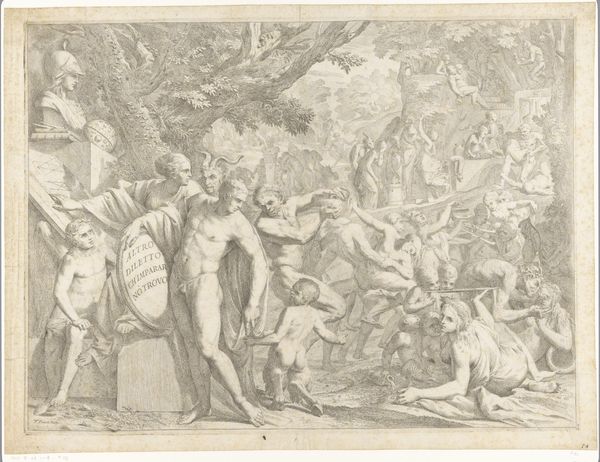
Cupid Presenting Psyche to the Gods 1540 - 1545
0:00
0:00
drawing, print, paper, ink, pen
#
drawing
#
venetian-painting
#
allegory
# print
#
charcoal drawing
#
mannerism
#
figuration
#
paper
#
11_renaissance
#
ink
#
pen
#
history-painting
Dimensions: 14-3/4 x 23-3/4 in. (37.4 x 60.3 cm)
Copyright: Public Domain
Editor: Here we have Andrea Schiavone’s drawing, *Cupid Presenting Psyche to the Gods,* created sometime between 1540 and 1545 using pen, ink, and charcoal on paper. It feels like a scene from a play, crowded with figures and dramatic gestures. What stands out to you most when you look at it? Curator: What immediately strikes me is how this drawing, intended as a print, actively participates in constructing a very specific kind of cultural performance around classical mythology. Mannerism, as a style, was favored by particular aristocratic circles, wasn't it? Editor: Definitely. So the subject matter and the style were both ways of signaling status? Curator: Exactly. Consider how the *story* itself reinforces hierarchies. Psyche, a mortal, is elevated to divine status through marriage. Schiavone is not just illustrating a myth; he’s visually participating in a discourse about social mobility and power. Notice the gods in the background—are they welcoming, indifferent, or something else? Editor: I see what you mean. They almost seem...impassive? Less like joyful celebrants and more like an audience judging a performance. Is that a common read of Mannerist art? Curator: Well, it highlights the performative aspect embedded in the art and reception. It's less about simple storytelling and more about the display of knowledge, taste, and the reinforcing of existing power dynamics for the target audience, who had enough education to understand the classical scene and recognize the artistic choices within Mannerism. It’s a very *curated* image, in that sense. Editor: That’s fascinating. I had thought about the subject matter, but not how the whole piece is carefully crafted for a particular audience to reinforce social structures. Curator: Right. By understanding the social context, we can understand how the art worked then and even consider what kind of statement its presence makes in a museum setting today. Editor: Thanks! Thinking about art this way really makes me consider its public role and lasting cultural effect.
Comments
No comments
Be the first to comment and join the conversation on the ultimate creative platform.
